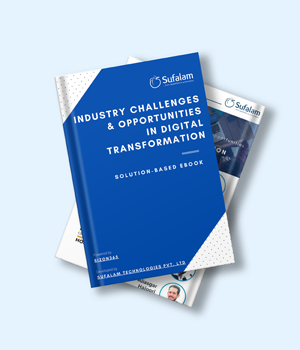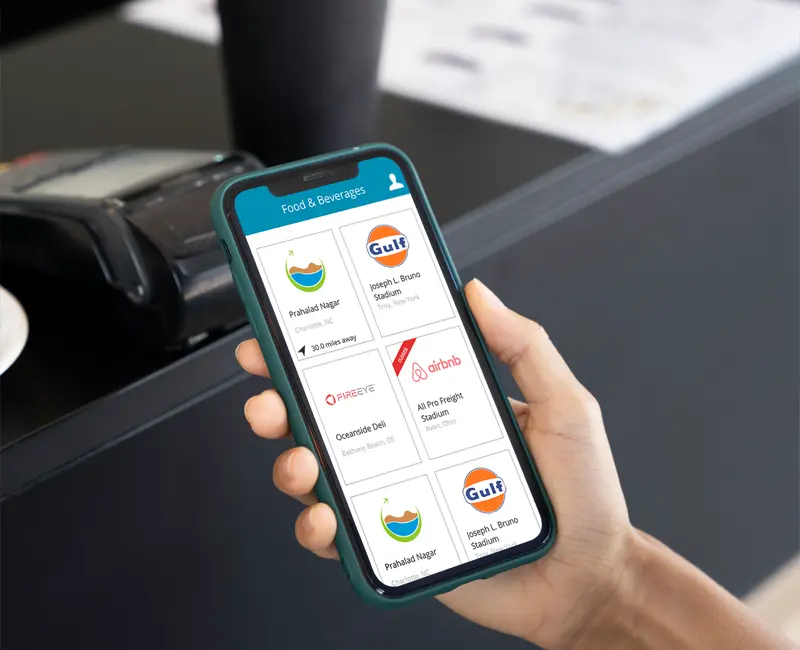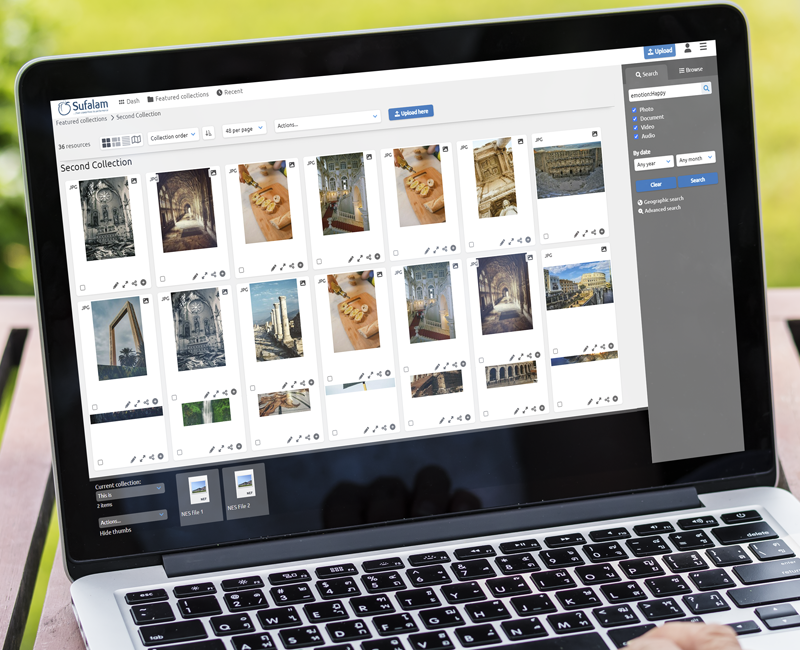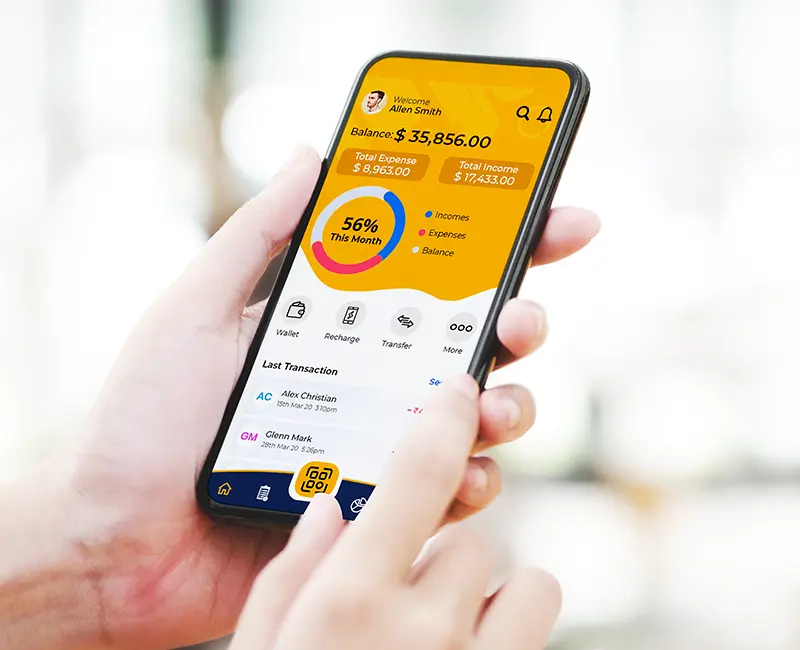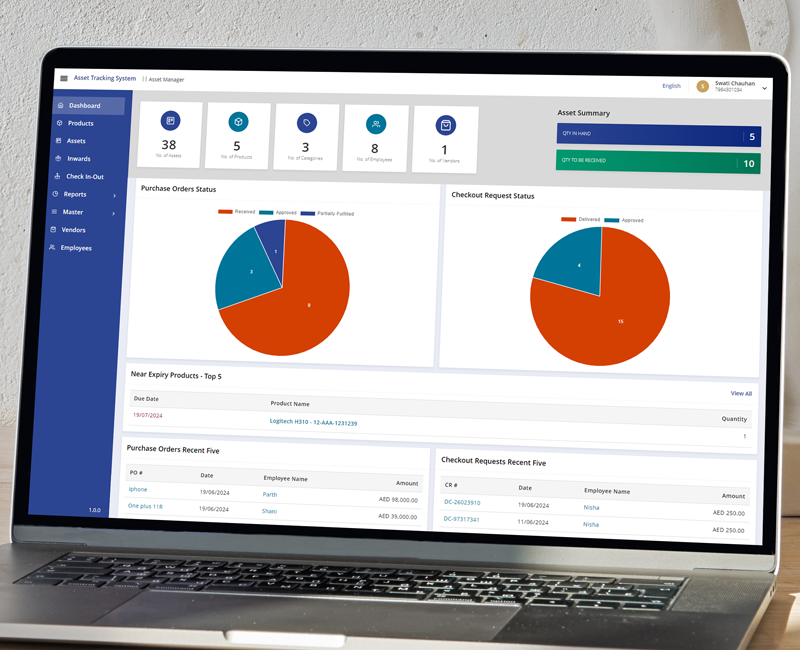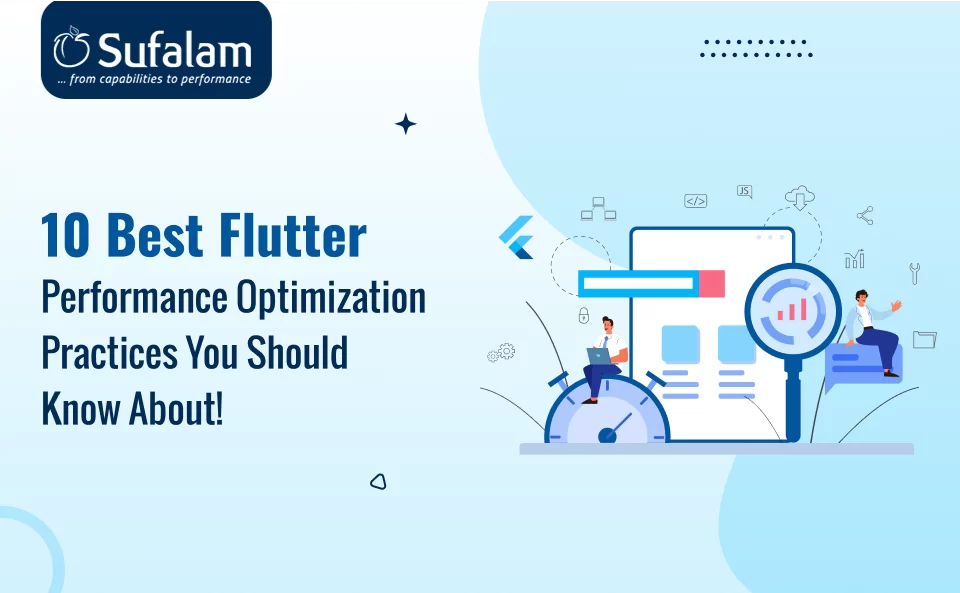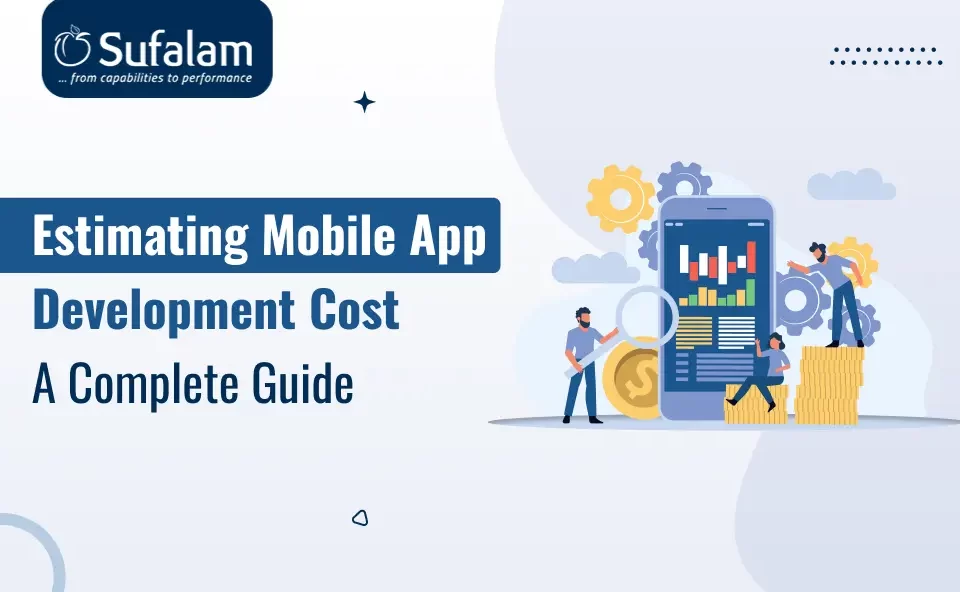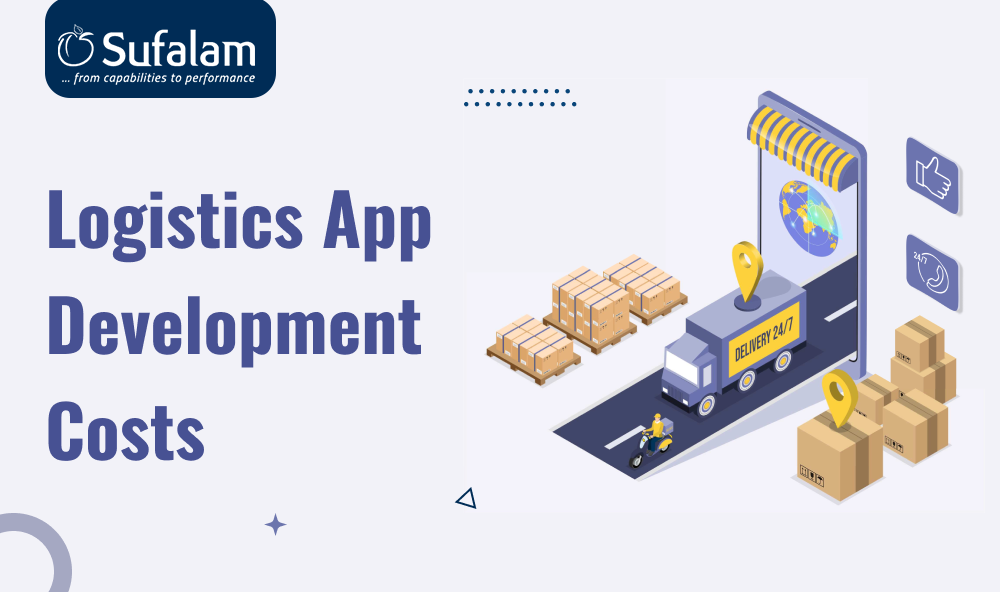
Every year, the supply chain and transportation industries lose over $15 billion due to downtime and operational failures. Furthermore, because they are unable to transport with a sufficient load, large-scale businesses and private carriers struggle with freight loss.
All of these factors lead to higher prices and the exit of logistics businesses from the industry. Before the logistics applications development, this was the main obstacle facing the transport industry.
Logistic app development helps you guarantee a dependable supply chain by eliminating middlemen and increasing supply chain transparency.
As a result of the rise of on-demand logistics app development, businesses have come a long way, accounting for $25.22 billion in sales. The global connected logistics market is projected to grow 14.5% to USD 86.57 billion between 2023 and 2030.
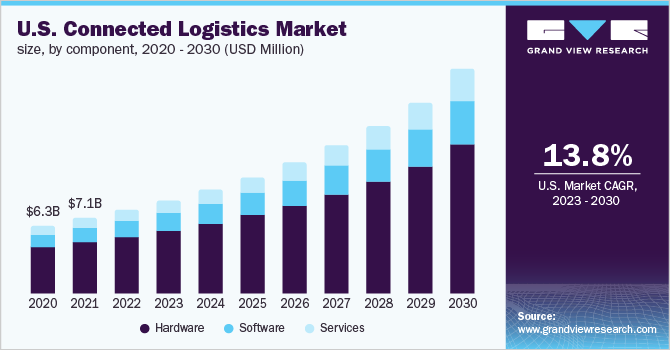
Source: grandviewresearch
Fascinating numbers, right? If you are looking to leverage these numbers and are willing to know more about them, then this blog is all you need. We will be covering the benefits, must-have features, and logistics mobile app development costs.
Let’s get started.
What is a Logistics Management Application?
Logistics mobile app development involves developing mobile applications that streamline and maximize logistics operations. These apps are intended to help with managing inventory, tracking orders, management of fleets, and delivery planning.
Logistics staff can more easily access real-time data, increase productivity, and make well-informed decisions with the help of intuitive interfaces. These apps also improve communication between team members and customers, resulting in more efficient operations and higher customer satisfaction.
The ultimate goal of logistics mobile app development is to transform the supply chain and transportation sectors by increasing their agility and responsiveness to the needs of contemporary businesses.
Types of Logistics Application Development
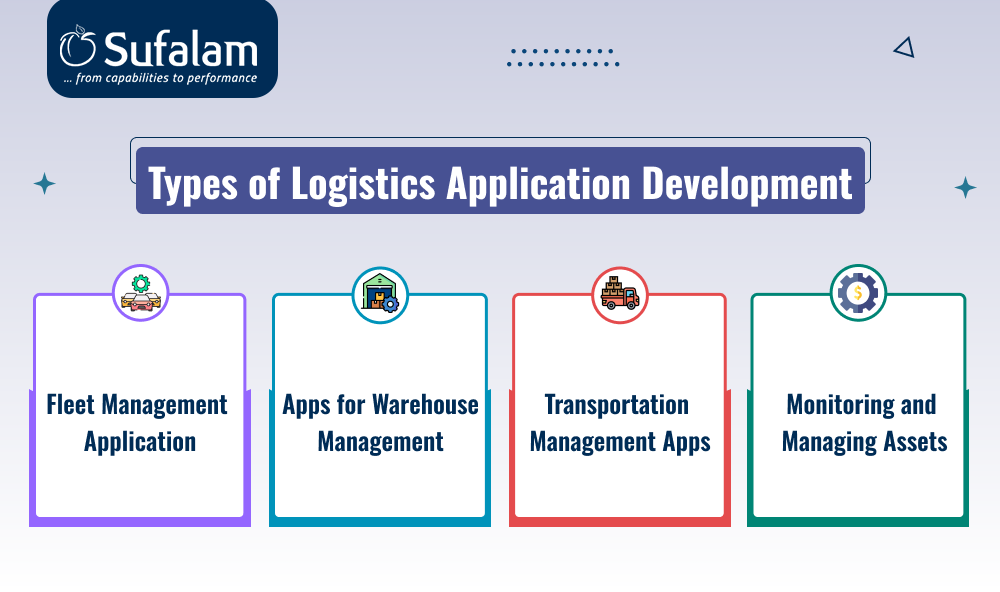
There are various types of logistics applications and you can choose the right one based on your needs and business processes.
Here are some of the common types of logistic apps:
Fleet Management Application:
The fleet management app stores all fleet-related data. A logistics company with a large fleet dispersed across multiple regions can better coordinate its operations with the help of this app. The logistics manager can use this app to instantly find out the precise condition of any fleet vehicle.
The management can make decisions more quickly thanks to the fleet management app, which increases productivity. The price range for creating a fleet management application varies based on the necessary features and functionalities, from $20000 to $50000.
Apps for Warehouse Management:
Logistics providers can oversee and improve warehouse operations, such as inventory control, order tracking, and warehouse layout design, with the help of warehouse management apps.
These apps increase productivity and lower expenses for logistics providers' warehouses. Given the features needed, warehouse complexity, and size, the cost of app development for a warehouse app can vary from $30000 to $80000
Transportation Management Apps:
Logistics companies can better manage their transportation operations, such as carrier management, load optimization, and route planning, with the help of transport management apps.
Logistics providers can make educated decisions and streamline their operations with the help of these apps, which offer real-time visibility into transportation operations. The price to develop a transportation management app can vary from $4,000 to $100,000 based on the features needed and how complex the transportation network is.
Monitoring and Managing Assets:
Asset tracking is a must for any fleet management software used by logistics companies. This feature allows them to track, locate, and manage assets in their warehouse. The purpose of this feature is to give tracking notifications for cargo, carriers, and goods. Users can combine inventory management and fleet management with asset tracking to obtain a more optimal physical location.
Must-Have Features in the Logistics Application Development.
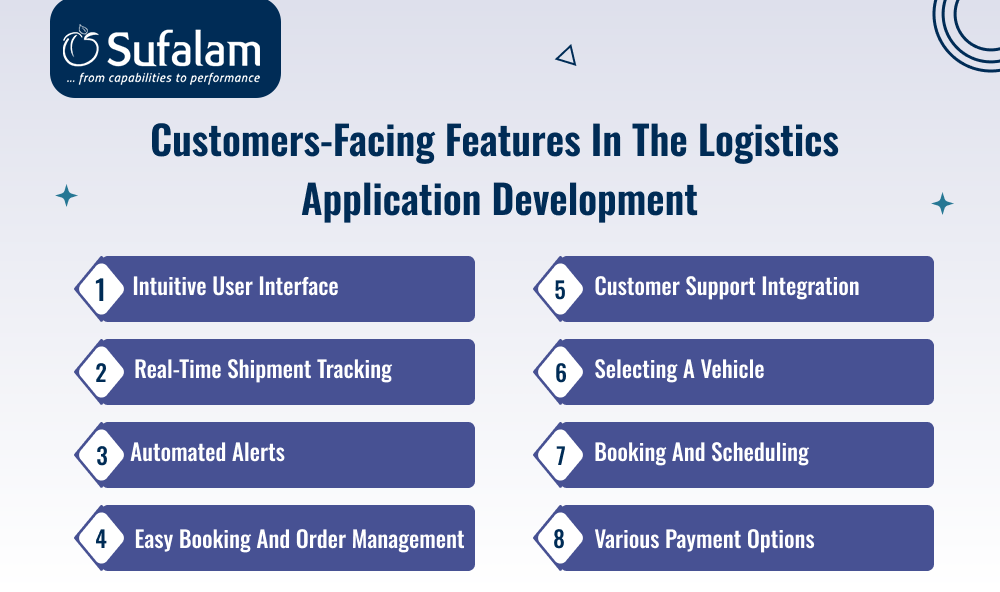
- Intuitive User Interface: Provides customers with a simple interface and navigation experience.
- Real-time Shipment Tracking: Customers can track their shipments online, providing them with complete visibility into how their orders are being shipped.
- Automated Alerts: Add feature that offers alerts users automatically about order status, estimated delivery date, and potential delays.
- Easy Booking and Order Management: Use an app to streamline the logistics process for customers, making reservations easy to book and orders simple to manage.
- Customer Support Integration: Incorporate all the customer support features so that customers can raise tickets and get assistance all from within the same interface.
- Selecting a Vehicle: Give customers the option to select from a variety of appropriate transportation options, such as vans or container trucks.
- Booking and Scheduling: Give customers the option to reserve pick-up and delivery services in advance or right away.
- Various Payment Options: Provide flexibility in payment by integrating several payment gateways.
Drivers Facing Features:
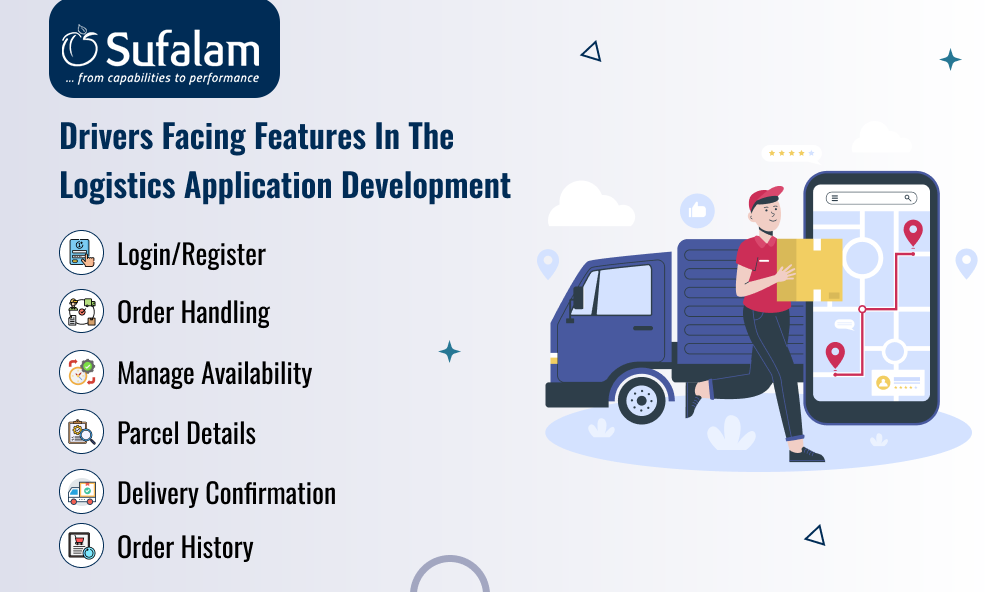
- Login/Register: Provide dispatchers and drivers the option to set up accounts via social media or email, and to update their profiles as needed.
- Order handling: Give dispatchers and drivers the authority to approve or reject service requests as per their availability.
- Manage availability: Allow switching between the states of busy and available.
- Parcel Details: Provide accurate delivery information by displaying all relevant parcel details and providing the best possible navigation routes for speedy deliveries.
- Delivery Confirmation: Provide tools for notifying all parties when the delivery is completed successfully.
- Order History: Allow drivers and dispatchers access to their previous orders and completed tasks.
Admin-Facing Features:
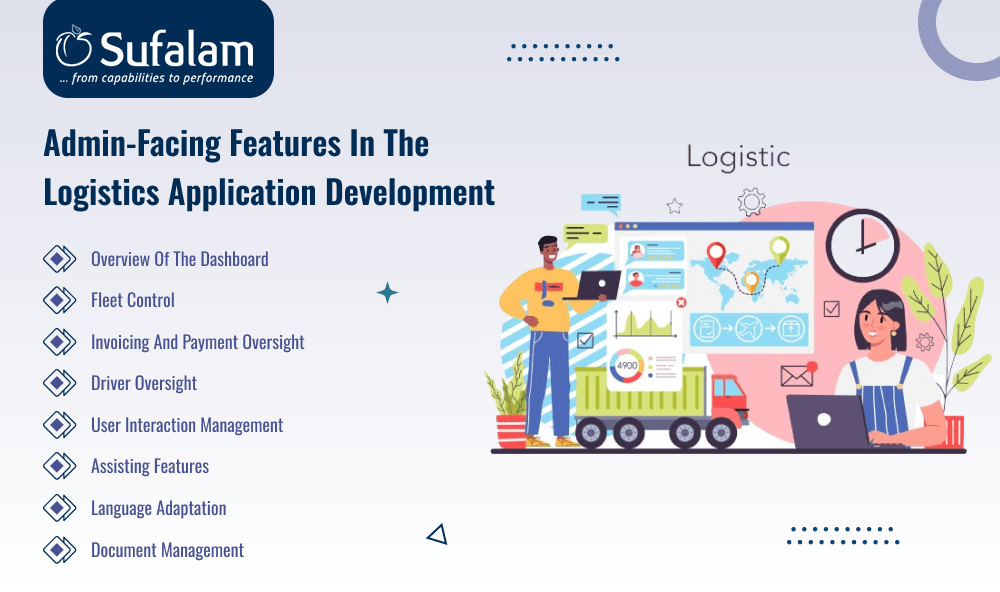
- Overview of the Dashboard: The dashboard is essential to show important real-time information about drivers, users, and active orders.
- Fleet Control: It should include overseeing and controlling the automobiles that are available for use in shipping.
- Invoicing and payment oversight: Create, edit, and manage invoices while keeping track of payments.
- Driver Oversight: Assign and oversee assignments, keep tabs on activities, and assess driver advancement.
- User interaction management: Effectively handle and respond to user inquiries and recommendations through user interaction management.
- Assisting Features: Include AI-powered support and in-app messaging to provide user assistance.
- Language Adaptation: Provide linguistic choices to accommodate users from various geographical locations.
- Document Management: Make it possible for dispatchers to organize and upload crucial shipping paperwork.
Logistics Mobile App Development Process: The Ultimate Guide!
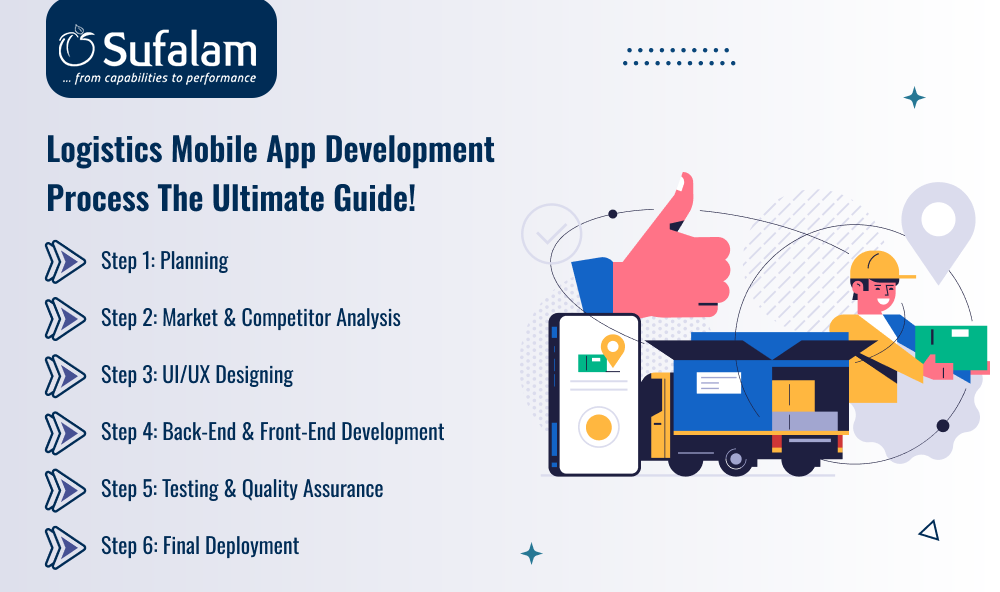
Step 1: Planning
Planning is the first stage in the development of a logistic app and is crucial to its success. You must first define the objectives, whether they are for better optimization of routes, effective management of warehouses, or enhanced customer interaction.
Step 2: Market & competitor Analysis
You must understand your audience and adapt your actions to meet their needs based on your goals. To place your app in the market, create competitor and industry analyses as well as industry trends. Based on your findings, you can prioritize the features you need.
Step 3: UI/UX Designing
After the analysis and research, the next step is creating wireframes to outline the basic structure and flow of your app. Following the wireframe, you can work on developing a prototype of your app that includes the user interface and experience. This will allow you to test your design concepts and make necessary adjustments based on feedback. You can hire the leading logistics app development company, who can help you with development.
Step 4: Back-end & Front-End Development
Now is the time to bring your logistics app to life using the appropriate technologies and processes. Hire the best mobile app development company to help you choose the right technologies and guide you throughout development as well. Develop a logistics application with a strong backend and a user-friendly front end. You must select a database that meets your needs for retrieving and storing data.
Step 5: Testing & Quality Assurance
After the development process, the next step is conducting end-to-end testing and quality assurance. It includes unit testing, integration testing, and user acceptance testing (UAT) and even includes Identifying bugs and issues and fixing them before the final release. Testing should cover various aspects such as performance, security, usability, and compatibility.
Step 6: Final Deployment
The last and final step is the deployment of the logistics app to use for employees, customers, drivers, dispatchers, and others.
How much does logistics app development cost?
The cost of app development can vary significantly based on a number of variables, including the app's complexity, features, platform, design, and more.
Here is a general overview of the possible logistics mobile app development cost ranges for logistics app development:
- Simple Logistics App: The logistics app development cost with basic features includes essential features like inventory management, order tracking, and basic reporting, usually ranging from $8,000 to $20,000 for a single platform (iOS or Android).
- Logistics App with Intermediate Complexity: Creating a more complex logistics app with improved features like real-time alerts, barcode identification, optimization of routes, and seamless integration of external APIs could cost anywhere from $20,000 to $50,000 for a single platform.
- Advanced Logistics App: Depending on your logistics app development needs, the cost could range from $50,000 to more for an extremely complex logistics app that includes features like cross-platform development (for both iOS and Android), extensive analytics, complex cooperation with backend systems, and an impeccably improved user interface.
If you are looking to get an accurate estimate for your logistics app, then connect with our logistics app development company and we will let you know.
To Conclude
In conclusion, the development of logistics apps is essential to bringing supply chain management into the modern era for businesses.
Integrating these apps can transform how businesses function as the logistics sector expands, offering them a competitive advantage in terms of efficiency, flexibility, and customer satisfaction. However, having a basic idea about the logistics of app development costs is important as well.
If you think the same and would like to develop a highly customized and feature-rich logistics app for your business, then you hire app developers from our mobile app development company. Sufalam Technologies has a team of the best designers and developers, who can understand your requirements and offer the best solutions accordingly.
Frequently Asked Questions
How Much Time Is Needed to Develop an App for Logistics?
The length of time it takes to design a logistics app depends on its features, complexity, and availability of resources. A feature-rich logistics app may take three to six months to develop.
Is it possible to develop a logistics app for Android and iOS at the same time?
Yes, you can use cross-platform frameworks like React Native or Flutter to create a logistics app for both the iOS and Android platforms. You can contact the leading mobile app development company for assistance.

